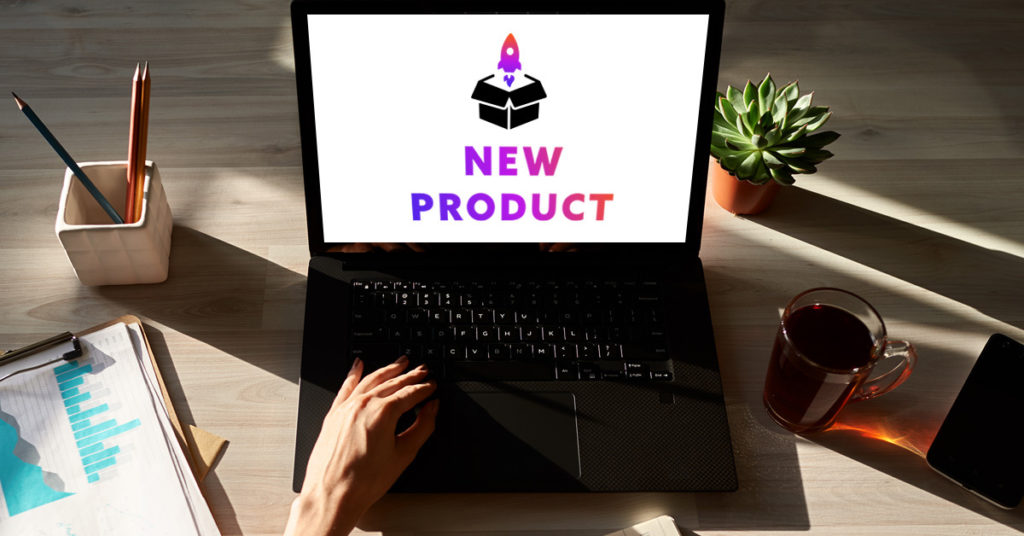There’s no doubt about it, new product launches are hard. You have to overcome the inertia of the marketplace and get people interested in what you’re selling. How do you go about improving your organic rankings on these new products to get some free traffic rather than just paying for it entirely upfront? One way to make this process a bit easier is with qualified traffic.
Cameron Yoder, sat down with Robbie Schnizler, Premium Services Manager, for a discussion surrounding paid advertising strategies for new product launches. This is a unique conversation because many sellers don’t have that formulaic approach for new product launches and the strategy behind utilizing advertising to launch.
Watch the full interview below.
Your first goal is to drive increased awareness in order to drive qualified traffic to the new product. This qualified traffic will then hopefully lead to new orders. Which will lead to more reviews which helps improve the organic ranking of the product thus driving more free traffic. This is what we call jumpstarting the flywheel effect through advertising.
Driving qualified traffic to your new product launch with brand terms
Start by looking at the lower end of your funnel. Targeting your own brand terms is going to bring in the most qualified traffic as they are already familiar with your brand. When talking about qualified traffic, this method is the best, quickest, and most efficient way to start.
Brands that have established themselves on Amazon are likely already dominating organic space with their top products. This may not ring true for your newer products. Newer products might not show up on page one of search or even page two for their top brand terms. Targeting brand terms for newer products will get you cheaper traffic with higher conversion rates. When we say cheaper traffic we mean you are going to be more relevant to your own brand terms in this situation rather than a competitor’s terms.
Why does this tactic do well for more recognizable brands? Because buyers are already searching for recognizable brands and products. This initial strategy requires you to have some level of pre-existing demand for your own branded terms. (Think about how customers searching for tissues often search for Kleenex because of brand familiarity and recognition).
So what about brands that are a bit less recognizable?
If you are a seller on Amazon without much brand demand, we recommend moving further up the funnel to start.
From here, you can work your way back down the funnel.
Move up the funnel with search and DSP
Regardless of where you start in the funnel, next steps are to continue moving up the funnel. Robbie recommends search, DSP, or sponsored display within the search platform. As you work your way up you are getting a wider set of people that are either searching for the product or searching in that category. The traffic may not be as relevant as the first step, but they are still relevant enough. This is where we start to see CPCs and CPMs get really expensive because the net you are casting is wider for relevance.
Plan to still be specific and really intentional with what you are targeting. What we mean to say is don’t throw your new product into an automatic campaign and cross your fingers that Amazon selects the most relevant terms for you. Take the time to research and find a minimum of 10-20 relevant keywords for an exact match to allow immediate relevant exposure.
There is no keyword targeting with DSP so you need to think about audience targeting. The most relevant or mid-funnel tactic with DSP or Sponsored Display is going to be in-market audiences within those [DSP or Sponsored Display.] You are reaching people that are already shopping in the category that your product is in.
The most important thing is to make sure you negate those who have already looked at your product. This way the only people you are targeting with this tactic are those that are not aware of your product already.
Utilizing all of the available advertising types on Amazon
The last method is for products that have been around for a while. Robbie recommends featuring them across all different ad types. Sponsored products, Sponsored brands, Sponsored brands video, etc.
Sponsored products have a lot of opportunity with 10 – 20 placements on a given page. The benefit is just the sheer amount of volume you can get.
Sponsored brands video have a more creative aspect to them when compared to sponsored products. With little to no reviews, sponsored brand and sponsored brand video provide the opportunity to showcase ad copy, a video, or a custom lifestyle image to entice people to click your ad.
Non-advertising specific methods for new product launches
Moving to non-ad-specific methods for launching a product. Reviews are the tried and true method to building social proof for your brand, they help prove to the customer whether the product is worth purchasing or not. Some of the methods that Robbie lists in the above video relate back to programs within Amazon that are meant to help you drive reviews to your product. The two programs referenced to help build out solid reviews for a new product are Amazon Vine and Amazon Born To Run.
Another great strategy utilizes Amazon Storefronts and Posts. If you are featuring products in a sponsored brand ad that leads to your Amazon store page, make sure that product is already being featured front-and-center in your storefront. Amazon Posts is another free opportunity – these are very similar to social media posts on platforms like Instagram and Facebook. If you want to learn more about Amazon Posts, check out our Sellers’ Guide to Amazon Posts.
Promotions are always going to help entice people to click and then hopefully purchase your products. This can be helpful when a product has little to no reviews at the beginning of its lifecycle because it gives viewers some reason to click and purchase the product.
Paring new ASIN variations with old models can also be utilized to launch new products. Pairing a product with a related product in the same subcategory can also create launch success. This allows the new product to show up right next to a best seller on that PDP to piggyback off the success of your first product and help generate traffic to the new product.
There are pros and cons to this method. In the video above, Robbie gives the example of an apparel client. If one product has five sizes in 20 different colors, Amazon is not going to allow them to dominate the SERP with all those different sizes and colors, imagine the user experience that would provide!
Non-advertising-related topics are going to drive traffic in and of themselves but they also compliment the promotions you are running on the paid side.
Key Teika-ways for new product launches
Let’s review the methods you can utilize to launch new products.
Start with featuring that product in your own branded campaigns. Once you have that lower part of the funnel built out, work your way up into category or non-brand terms. Lastly, don’t leave out all of the ad types that Amazon offers both paid and organic. But don’t forget, advertising is just one part of the strategy. There is also content, Amazon stores, Amazon posts, and variating on the organic side.
The ultimate goal is to put in effort on the paid and organic side to get traffic and improve the organic listing now. Later on down the road, you don’t have to spend as much on your products to get exposure to them.
Best of luck on your launch journey, and happy advertising!





